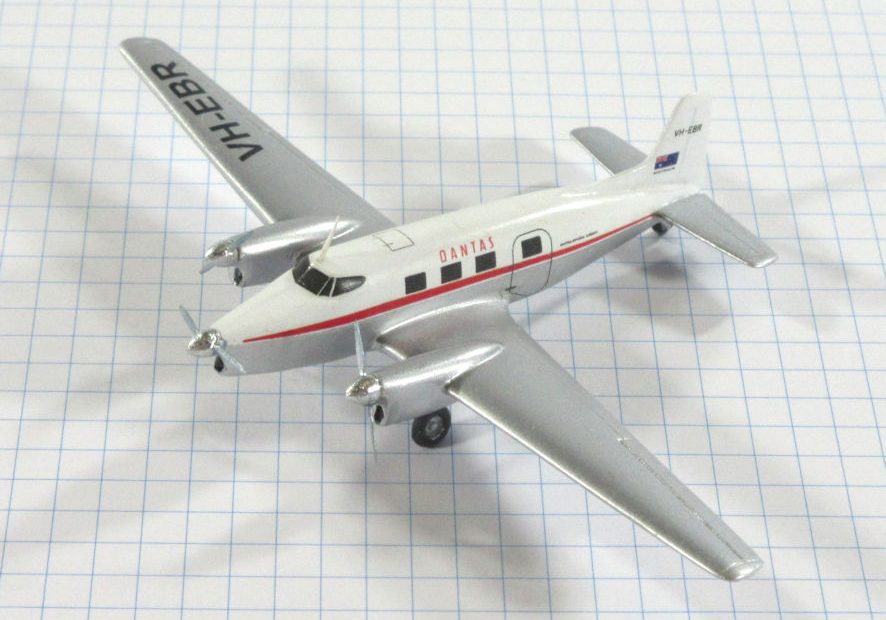The deHavilland Drover was an attempt to produce an aircraft to replace the venerable deHavilland DH-84 Dragon that has flown successfully around Australia from the mid 1930s. It was similar to the deHavilland twin engined Dove but with three engines, designed for use in regional and remote areas so it was rugged and simple to maintain. However, there were significant problems with the design so it did not achieve great success and only twenty were manufactured between 1949 and 1953. The main users were Qantas, TAA and the RFDS.
This is an aircraft that any self respecting Australian airliner modeller has to have in their collection but the only way to get one was to heavily modify a deHavilland Heron kit, a four engines airliner of similar design. While I would have liked one I was not going to chop up my ancient Aifix 1/72 kit to do it so adding a Drover to my collection remained but a daydream. Then, completely unexpected by me, Welsh Models announced a 1/144 kit of the Drover in both Qantas and TAA liveries. Within a few days copies of these kits, in both liveries, were on their way to me.
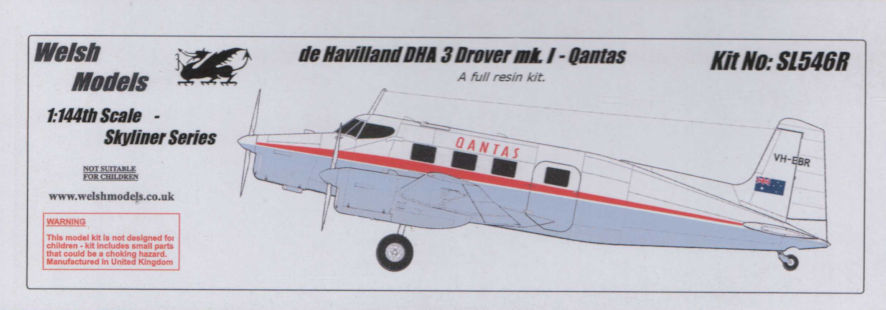
This is a tiny little kit of what was not a big airliner. It is also a simple little resin kit with no more parts than is necessary to produce a reasonable replica of the Drover. Since the Drover was a simple aircraft there is not much scope for super detailing this kit thought it could be done, if you possess a microscope.
Even with the simplicity of the parts this is not one of your modern CAD designed kits and there is plenty of filler required to take care of some unsightly gaps. But even with that impediment this model reaches the painting stage fairly quickly. As with all airliner kits, it is necessary to ensure that the surface is finished as smoothly as possible because the white and bare metal finish will show up any blemishes with alarming clarity. After a couple of coats of SMS grey surfacer to locate and fix as many blemishes as I could see, I used SMS Aluminum and Tamiya Pure White as the final coats. The decals for the Qantas Drover are good and go on relatively easily. I gave the decals a hand brushed coat of Aquagloss which helps to bring the decals to the same level of gloss at the paint job.
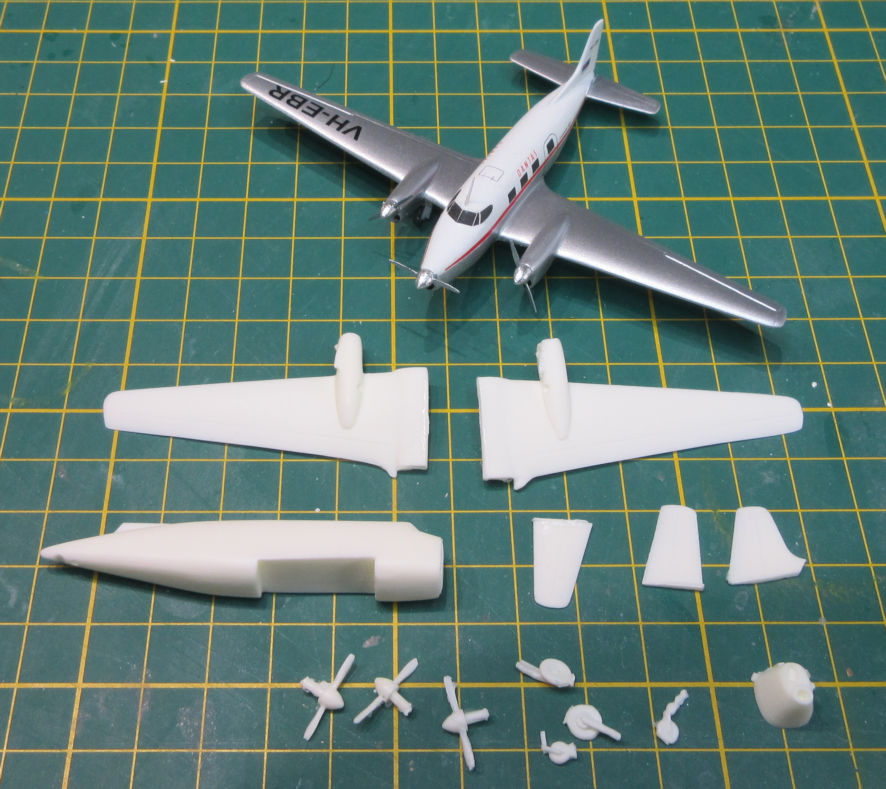
There were three things I was not happy about with this kit. The first is that I feel the kit does not capture the simple shape of the fuselage which is all straight angles rather than the curved transition from the fuselage to the tail area of the kit. I did not realize this until I was too far down the construction process to go back although this problem could be easily fixed with some plasticard and a bit of judicious sanding – I will give it a go when I make the TAA version.
The second problem is not something you will ordinarily notice unless you look at the underside of the model. The Drover is a fixed undercarriage aircraft with a simple and thin strut from the engine nacelle to the wheel. In the kit this is instead a thick little stump of resin, which makes sense because a thin piece of resin would be too thin to support the weight of the model and would easily break. It would have been a simple job to replace the resin with a short piece of wire and it would have looked much better. But I was keen to get the model finished so I decided to use the kit parts instead. Shame on me.
The third issue was something that even I had to deal with. The kit propeller blades are short and round whereas they should be longer and thinner. This was too obvious for me to ignore so the tiny kit blades had to be cut off and new blades fabricated. This is no easy task since they are only about seven millimeters long and one millimeter wide. Fortunately I have some 1mm wide plasticard which had to be cut to length and then sanded to shape. I needed six of these and probably made ten or twelve of them before I ended up with blades that looked reasonable and didn’t disappear into the carpet.
If you want a Drover in your collection and bear in mind the three points I’ve made, I’d recommend this kit. Overall this is a nice little kit that I am pleased to have. It is not cheap but I don’t expect there is a wide market for this aircraft so that dictates the price to some extent. It is far from being a Tamiya quality kit but when you get one of these you know there will be work involved in bringing it up to a satisfactory level. I was prepared for this and happy to do the work, though I wish I’d noticed the problem with the fuselage shape before it was too late to turn back because, as a result, to my eye this nice little model doesn’t quite capture the simple and angular look of the Drover.
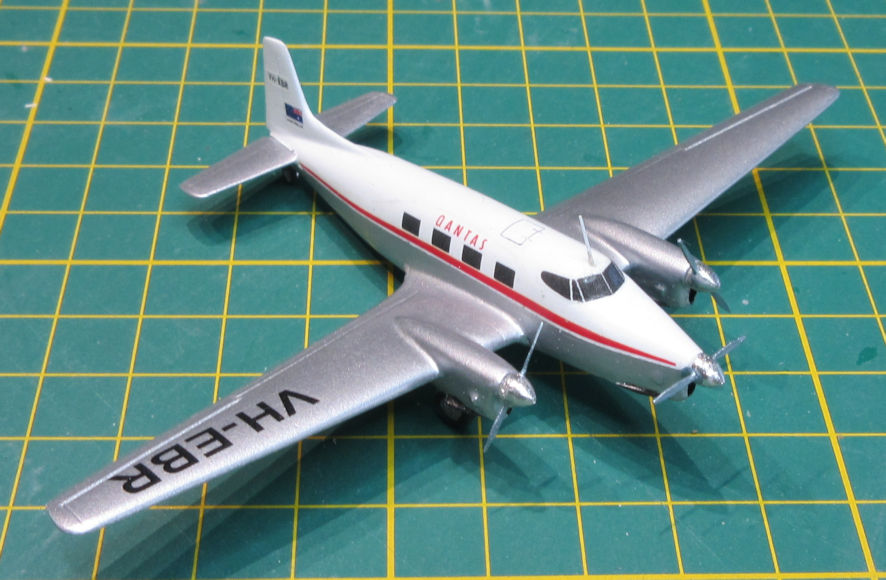
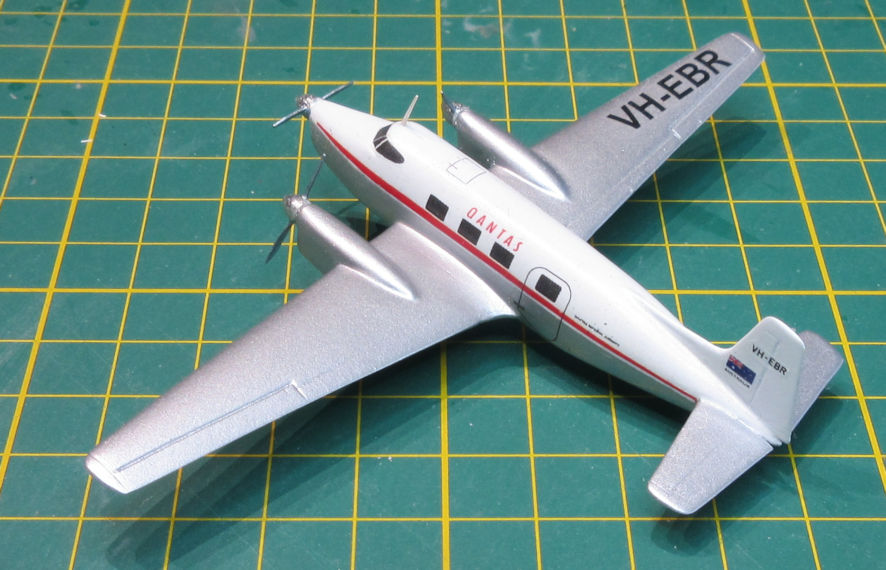
Leigh Edmonds
July 2022
